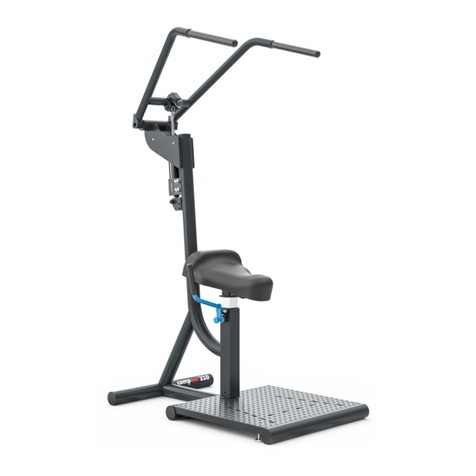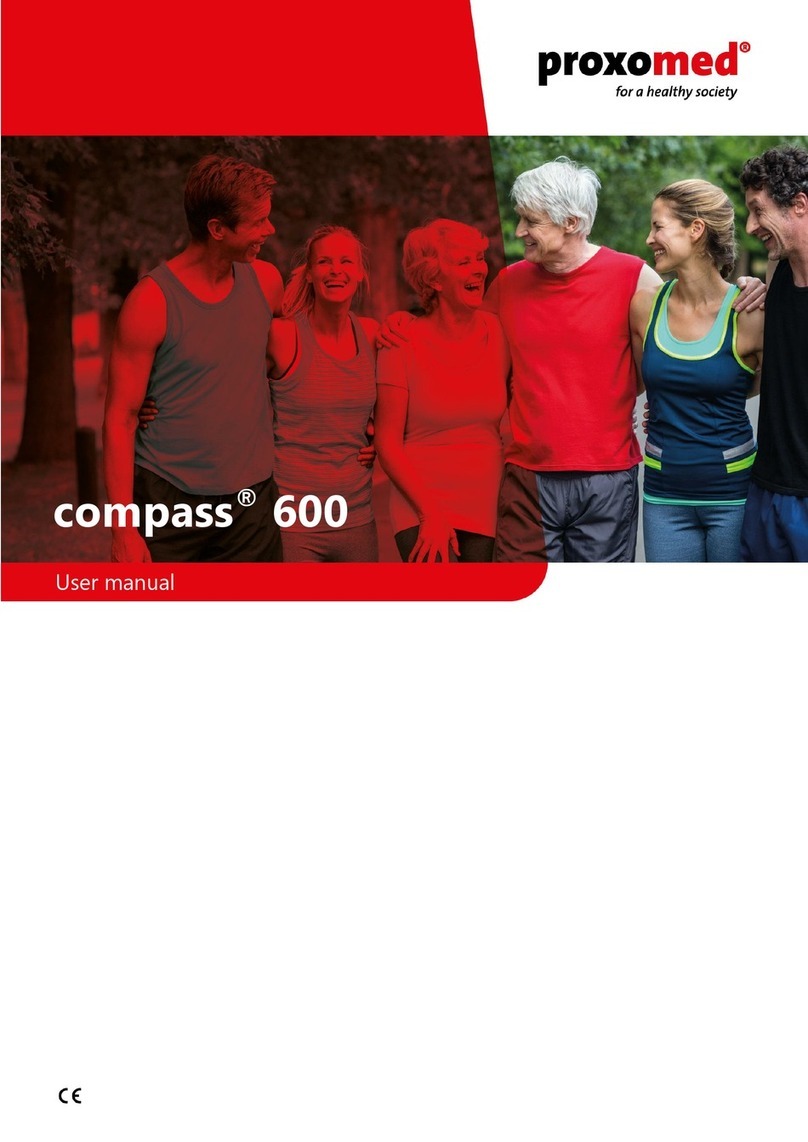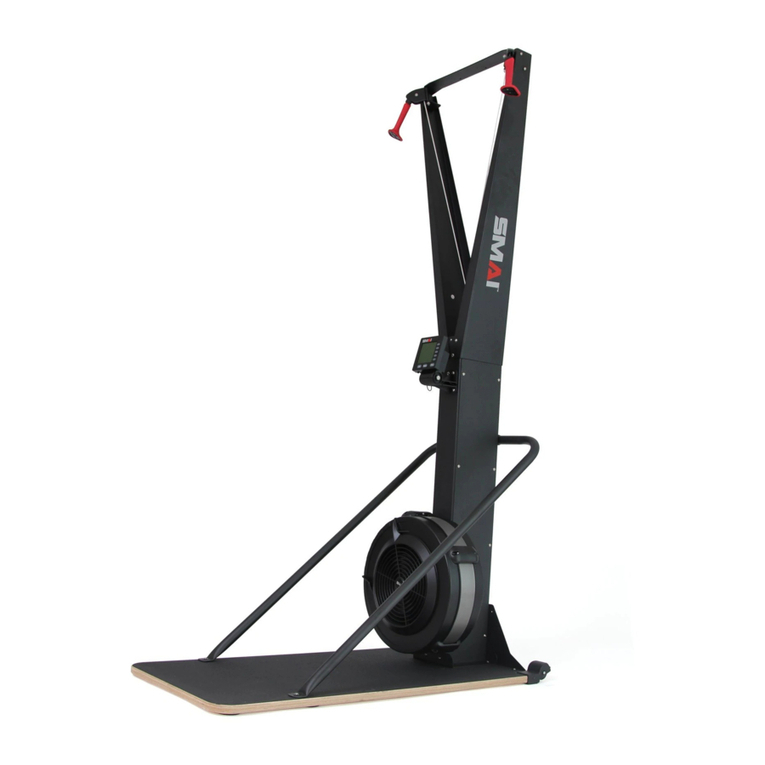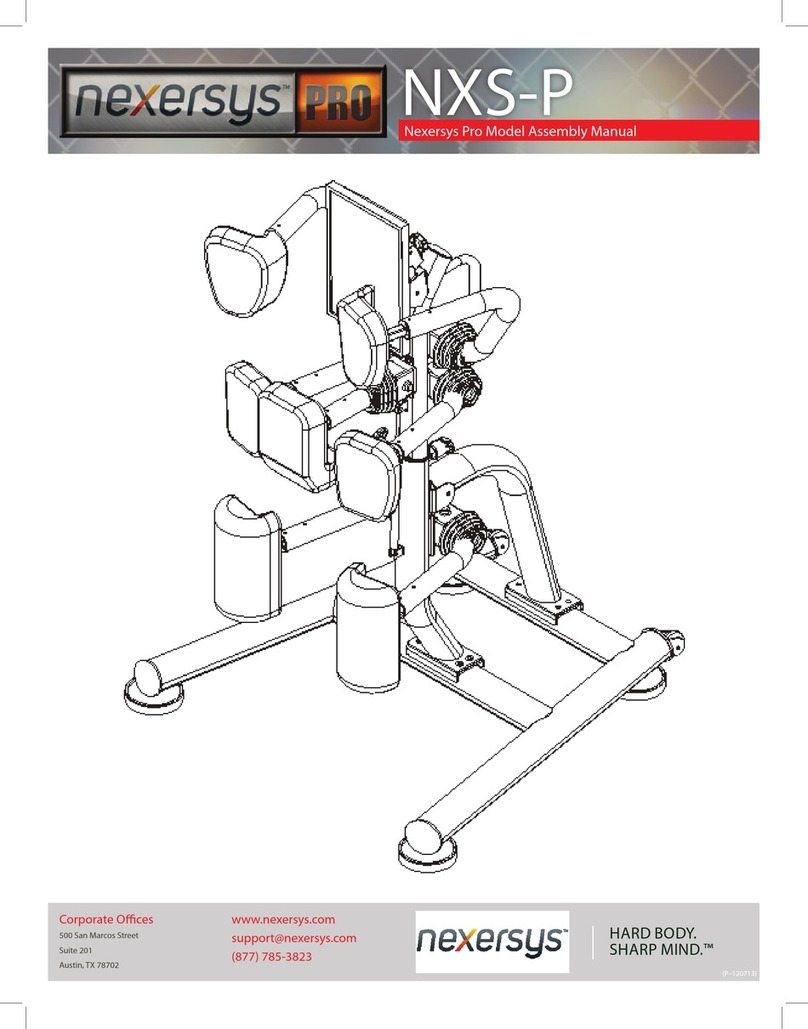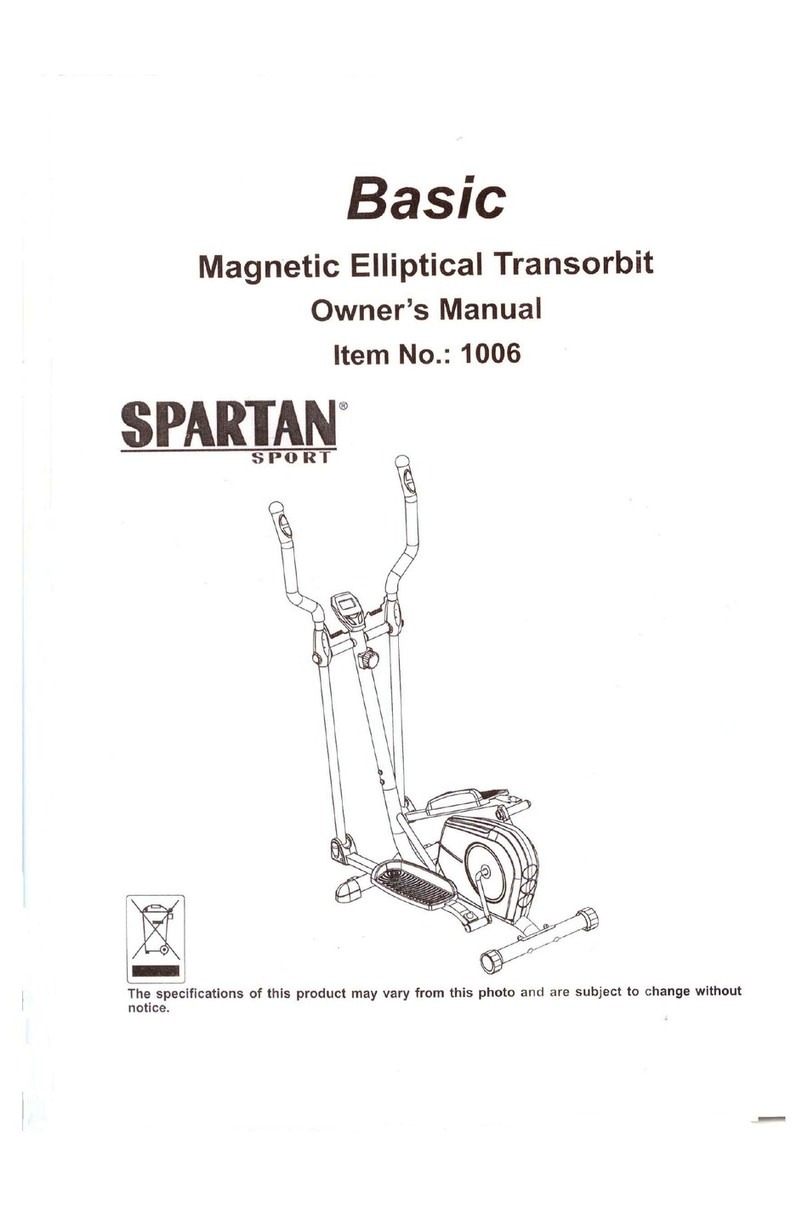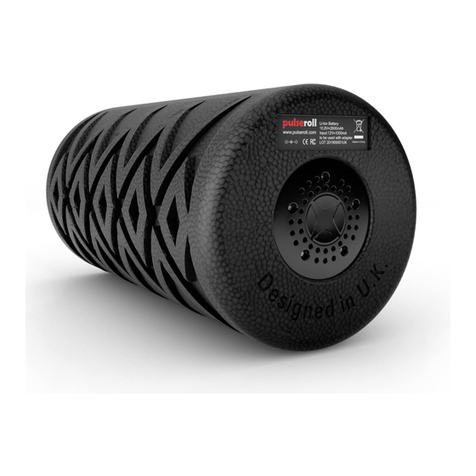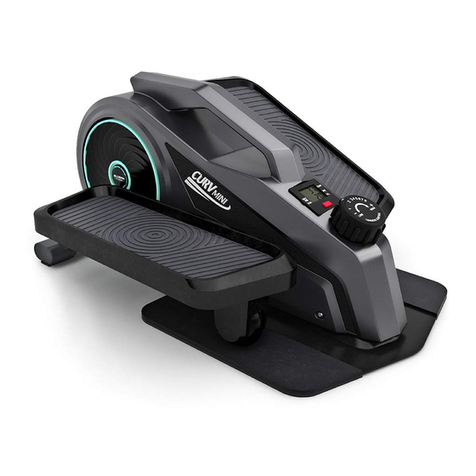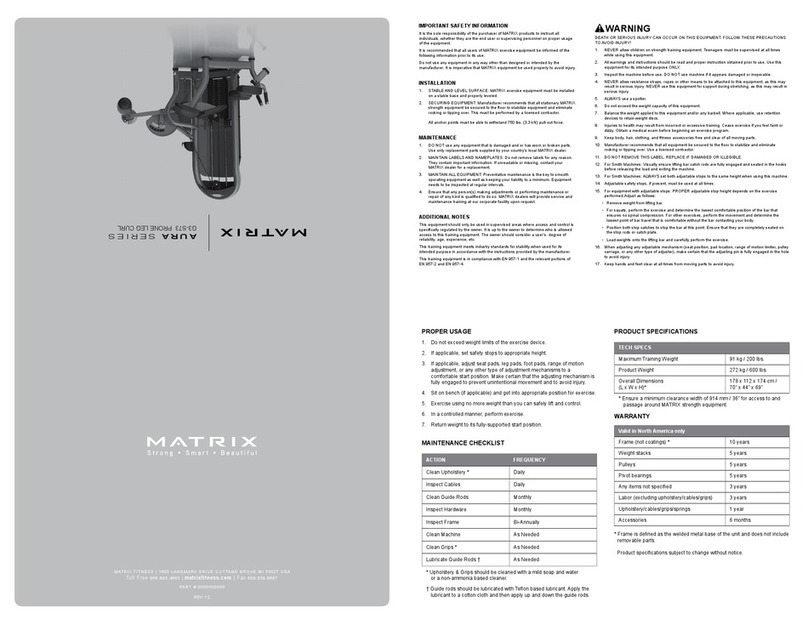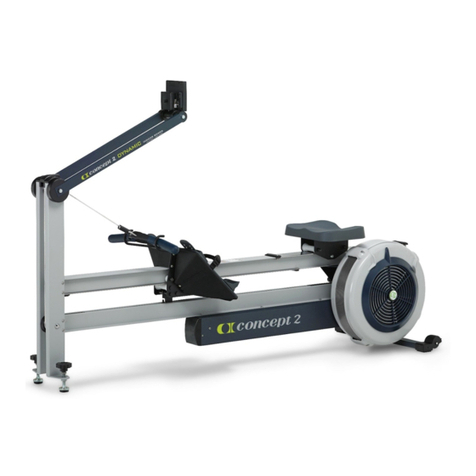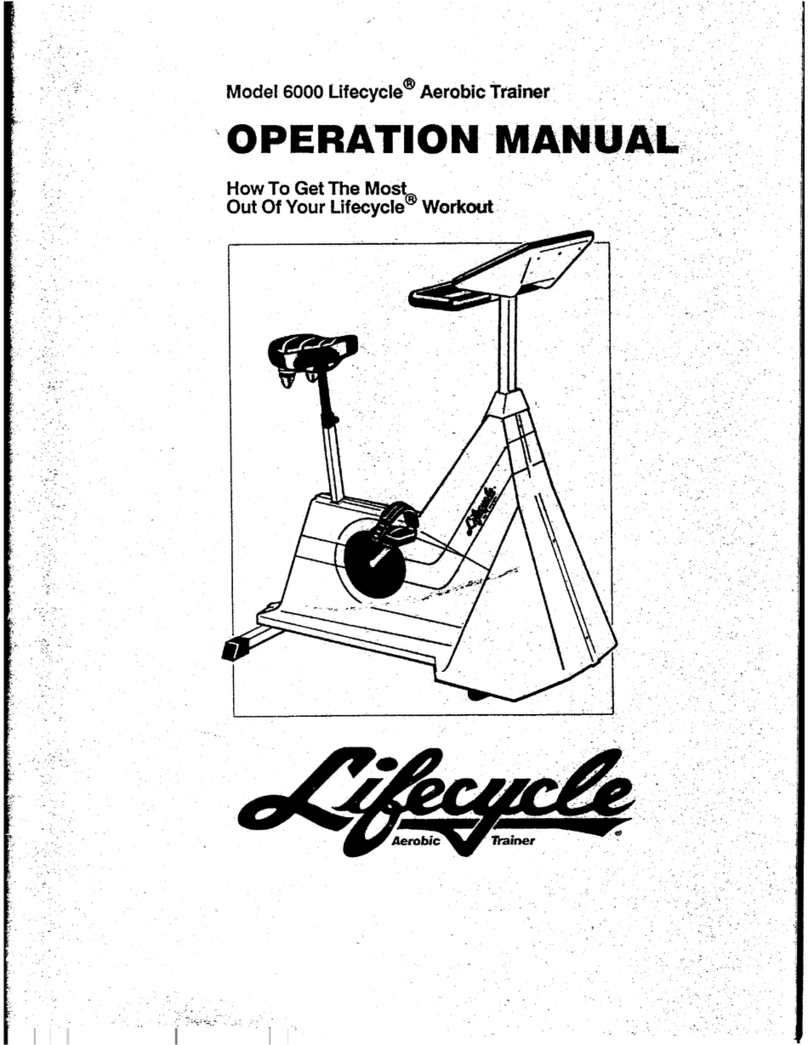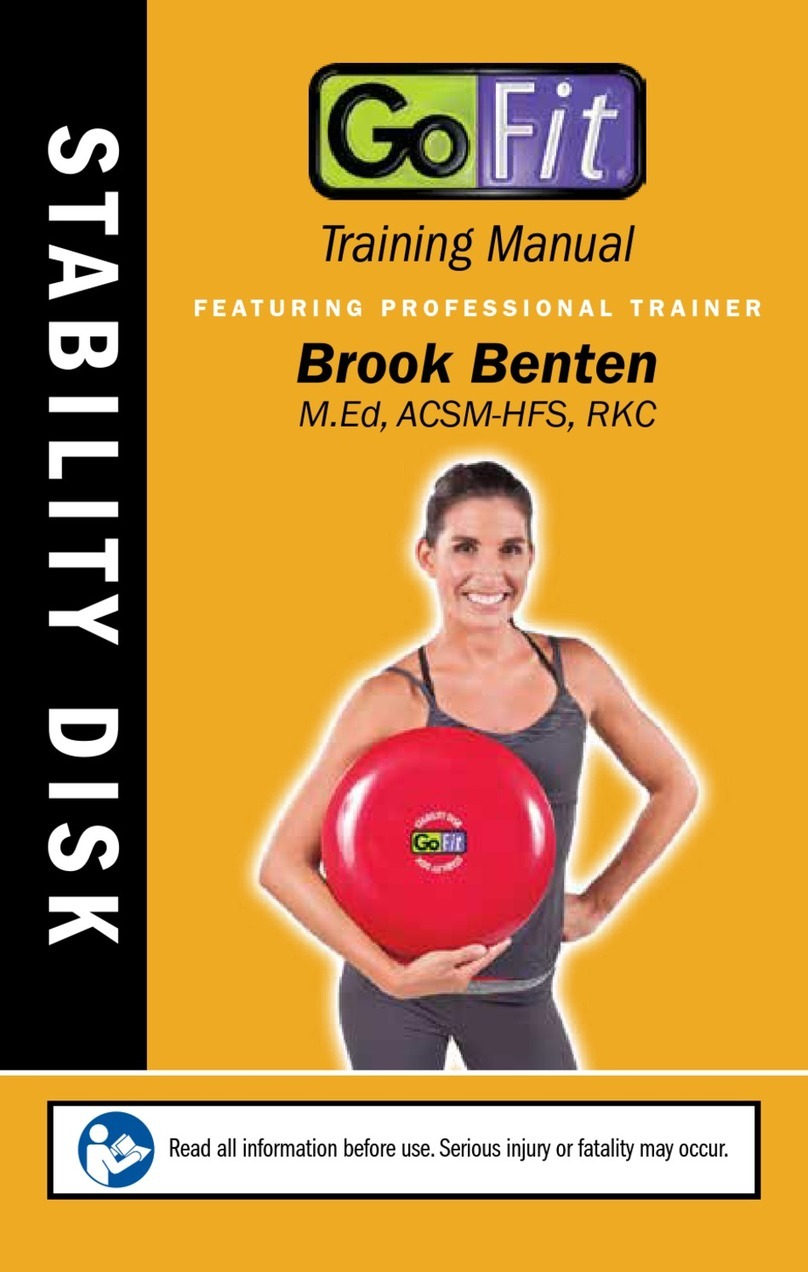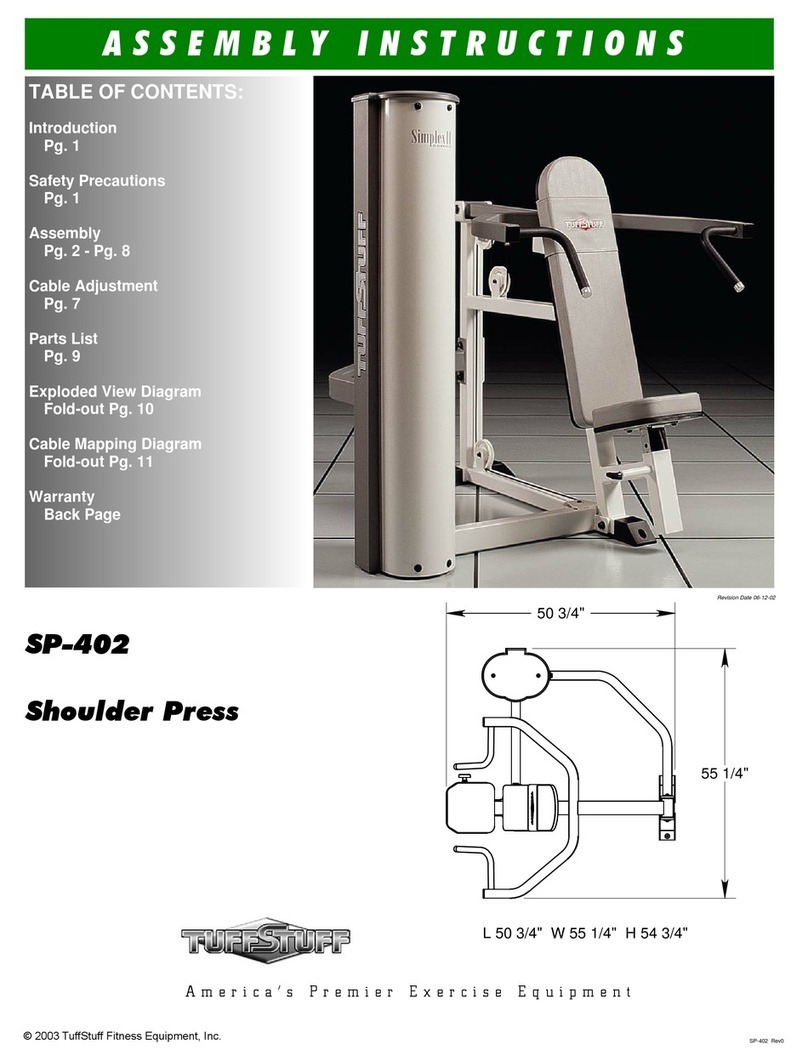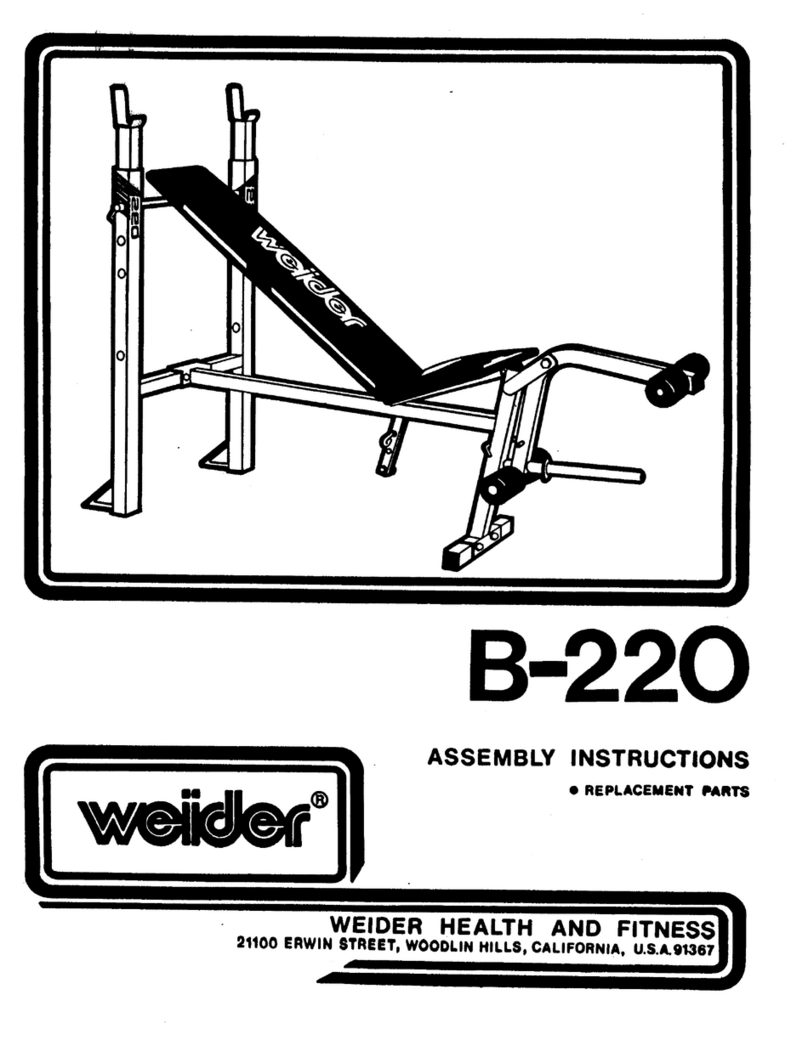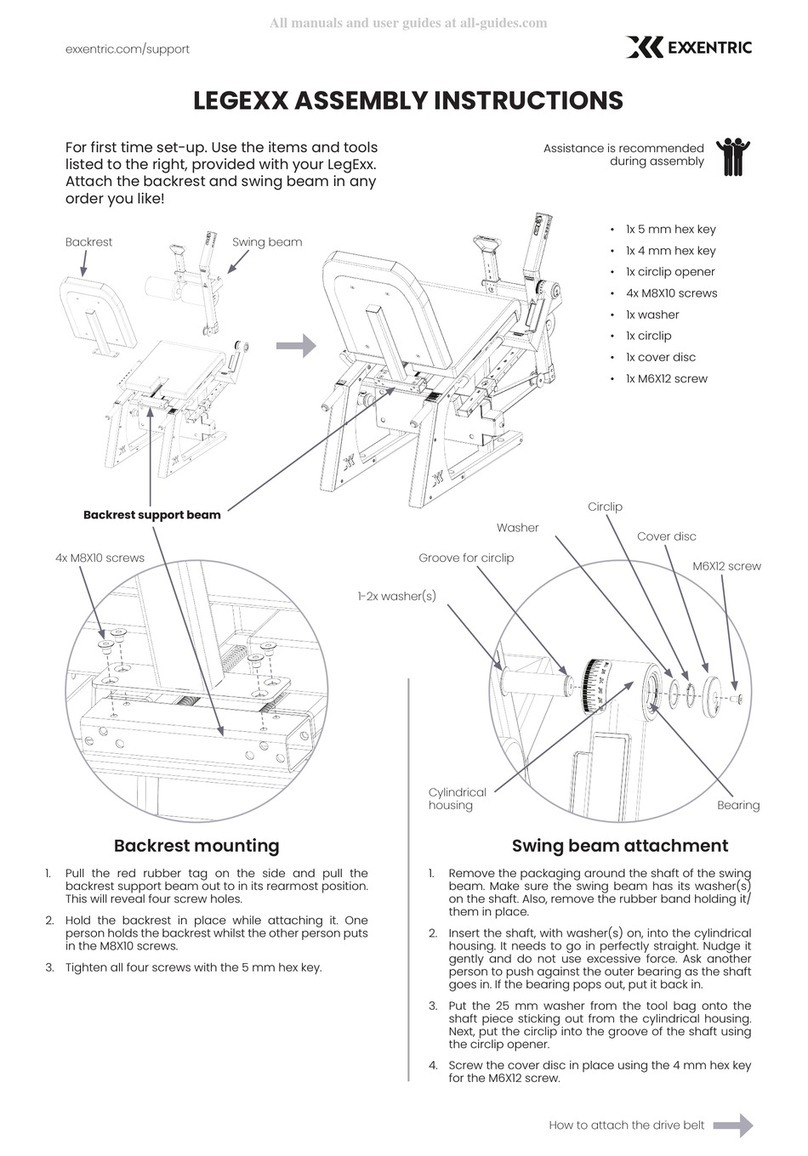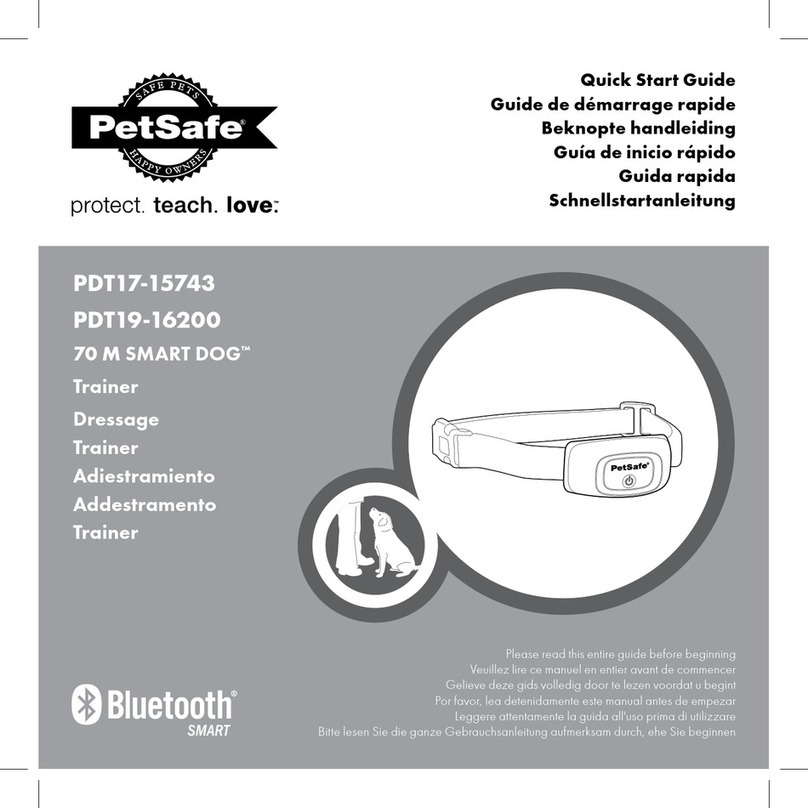Proxomed kardiomed 530 cycle User manual

User manual kardiomed cycle 521 med Version 1.0
Page 1of 21
User manual

User manual kardiomed cycle 521 med Version 1.0
Page 2of 21
Contents
1General..................................................................................................................................... 3
2Classification of the unit.......................................................................................................... 3
3Safety warnings ....................................................................................................................... 3
3.1 Safe assembly of the unit ................................................................................................. 3
3.2 Safe training ..................................................................................................................... 4
3.3 Indications and contraindications.................................................................................... 5
4Operating the display.............................................................................................................. 5
4.1 Pulse systems..................................................................................................................... 5
4.2 Overview Display / Button Functions............................................................................... 6
4.3 Display............................................................................................................................... 7
4.4 Quickstart.......................................................................................................................... 7
4.5 Programming the monitor ............................................................................................... 7
4.6 Adjusting the resistance ................................................................................................... 7
4.7 DOT Matrix........................................................................................................................8
4.8 Biofeedback ......................................................................................................................8
4.9 Training Control via the storage media ..........................................................................8
4.10 Online-Training with RFID................................................................................................ 9
4.11 Results ..............................................................................................................................10
4.12 Programs of the cardio line.............................................................................................10
4.13 Pulse controlled programs ..............................................................................................16
4.14 PC-Interface......................................................................................................................16
5Maintenance ...........................................................................................................................18
5.1 Instructions for the error condition detection (failure).................................................18
5.2 Instructions for preventive maintenance by the operator ............................................18
5.3 Maintenance for authorised specialists ..........................................................................19
5.4 Performance of the metrological control pursuant Medical Devices Operator
Ordinance ...................................................................................................................................19
5.5 Conduction of a safety-related control (According to the transposition of the medical
device directive 93/42 EEC into national law) ...........................................................................19
6Technical data .........................................................................................................................19
7Warranty conditions .............................................................................................................. 20

User manual kardiomed cycle 521 med Version 1.0
Page 3of 21
1General
Read the instruction manual with its security advices and warnings prior to the initial use of
the units, to secure a safe and conventional use. Keep this document for future reference
and pass it with the unit in case of resale.
2Classification of the unit
The units of the cardio line med are medical products according to guideline 93/42 EEC, categorized in
class IIa. In the control range of the brake, the tolerance is less than 5% or with resistances 50 watts and
below less than 3 watts.
The items of the cardio line are consistent with the standard DIN EN ISO 20957 and designed for supervised
range.
Only one person at a time can use the unit; the maximum usage weight has to be less than 150 kg. Units
with the optional boosted version can be burdened up to 200 kg, see type label and additional instructions.
3Safety warnings
3.1 Safe assembly of the unit
Fig.1: View of machine with indication of relevant elements
Adjustment feet for
levelling
Handle bar
Saddle
Adjusting screw for the
horizontal saddle adjustment
Adjusting lever for the
vertical saddle adjustment
Monitor for individual settings and
visualization of the training data
Position of Type Label
Pedals

User manual kardiomed®521 cycle Version 1.0
Page 4of 21
Place the unit on a solid, flat and non-sliding ground and level the unit with
the adjusting feet, so that it does not move.
For the set-up a safety clearance of 100 cm to all sides is necessary to ensure a
safe access also in emergencies. Safety clearances between the devices are
allowed to overlap; see picture.
The usage may only take place in dry rooms (< 65% humidity, > 0 < 45°C room
temperature).
Pay attention that there is no electromagnetic radiation like mobile phones or
fluorescent tubes, because they may affect the measurement of the heart rate.
Do not locate the units on thick rubber mats. Ensure that the unit gets airing from all sides.
All units of the cardio line are self-powered. The user will either generate the electricity by pedalling or
–especially while programming –will be supported by the standard, built-in battery pack. The battery
power will last for about two years. See topic “5 Maintenance” for battery change.
Attention: Please consider the standards for care, maintenance and servicing in chapter 5 of this manual.
3.2 Safe training
Before starting to exercise, the fitness of the user has to be ensured by an authorised specialist or a
doctor. Please note topic 3.3 Indications and Contraindications.
Excessive exercise can be dangerous.
When nausea or dizziness occurs, the work-out has to be stopped right away and a doctor needs to be
allocated.
The training on the units is allowed with unbruised skin only.
While exercising light, tight fitting clothing, which cannot be caught in parts of the unit is
recommended. Always wear sports shoes to ensure a good balance on the pedals.
Please check the unit before exercising for a good level, faulty parts or other manipulations. In case of a
defect or if you are not sure, ask a supervisor.
Before the start of the workout it must be assured that no one is close to moving parts, to avoid danger
for a third person. Above all, hold unattended children off the units.
As a safety function, the stop button is always active and immediately slows down the motion when
pushed.
To exercise in a biomechanically proper position the unit has to get adjusted. Positioning: On the cycle,
the horizontal as well as the vertical seat position can get adjusted. To change the vertical seat position,
loosen the bolt on the front of the seat post and manually position the desired height. Safety: When
adjusting the vertical seat position, make sure that the bolt is back in the starting position before
putting any weight on the seat. The seat position can be noted via the scale on the front side of the seat
post, by that the user can easily adjust the seat positioning when repeating the workout. The position
should be chosen to ensure that in the lowest pedal position the knee still bends by about 10°.
To adjust the horizontal position, the seat knob should be loosened, then the seat can be moved
forwards or backwards. Afterwards the knob must be retightened. The horizontal position has an effect
on the load, resting on the arms during the workout (slope of the upper body).
Warning: The system to control the heart rate can be faulty. Excessive workouts can lead to serious
injury or death. When nausea or dizziness occurs, the work-out has to be stopped right away.
Warning: Solely use unit with the casing.
Warning if using optional power supply: Use exclusively medical power supply units according to IEC
60601-1 which are approved by the manufacturer.

User manual kardiomed®521 cycle Version 1.0
Page 5of 21
3.3 Indications and contraindications
Indications
Mobility of the locomotors apparatus
Strengthening of the muscles
Strengthening of the cardiovascular system
Contraindications
Cardiovascular affections
Pains of the locomotors apparatus
During workout
Pains in the thoracic region
Nausea
Dizziness
Pain in the joints involved in the motion
When taking medication ask for a doctor’s training advice.
4Operating the display
Depending on the program version chosen, three or eleven training programs and eventually the optional test
programs allow for an individual and diversified training.
4.1 Pulse systems
Every piece of equipment of the cardio line includes the original Polar Pulse System, which receives signals from
a breast belt by the exerciser (the breast belt is not included in the delivery of the equipment). The wireless
transmission to the electric display is coded. The Polar©technology is based on a magnetic field, which transfers
the signals. This magnetic field can be interfered by several sources. The most common reason is the use of
breast belts that are not 100% compatible with the Polar©-System and commonly have a longer range. Cell
phones, speakers, TVs, power lines, fluorescent tubes, and motors with high power can also interfere with the
Polar©Pulse System.
The measuring of the pulse frequency is ECG precise. Only when using coded breast belts, like T31C, the heart
rate gets transferred coded. When using an uncoded breast belt, like T31, the transfer is uncoded.
Ear-pulse (optional)
The ear-pulse-system with the optical measuring at the earlobe is available as an
option. If an ear-pulse cable is connected it has priority over Polar© pulse
measurement, which will get disconnected. Attention: Rub earlobe
thoroughly before applying the ear sensor. To check proper operation of the sensor,
switch to the pulse display for surveillance. Therefore press the Scan-button three
times while exercising. The indication for the pulse signals has to be high and at regular intervals.
Multi-colour-backlight
All ergometers are equipped with a multicolour backlight for the LCD-Display. The electricity gets provided by
the brake. The brightness depends on the current load. Lighting is not possible with really low load because the
required power can´t get provided safely. The backlight of the ergometer turns on after some seconds in use.
Due to the backlight it´s easier to read the display, even if lighting conditions are bad.
Safety advice according to DIN EN ISO 20957
Warning! Systems for the heart rate surveillance can be faulty.
Excessive workouts can lead to serious physical damage or death.
Abort the workout immediately when dizziness or nausea occurs.

User manual kardiomed®521 cycle Version 1.0
Page 6of 21
4.2 Overview Display / Button Functions
Fig. 2: Monitor view for explanation of buttion functions
Clockwise explanation of the buttons, starting with the Stop button:
The STOP button stops the workout and activates the electronic brake, which will generate a maximum
workload for 8 seconds to bring the movement to a halt. After that, the COOL function can be used to
conduct a cool down with low intensity.
The PROG button must be pressed to start the selection of programs available –solely if no storage
media is used.
The Cool button stops the workout before the end of the chosen program, begins with the cool down
mode and finishes the workout with a low intensity. The workout data is shown and saved on the
storage media, if the workout has been started using a storage media.
The Scan button changes the display mode, parameters, or graphical displays within the Dot Matrix on
the monitor.
The Smart Key buttons function as shown in the Dot Matrix area of the monitor according to the
situational need.
Reset button –Initially, the Reset button is not visible for the user. It is hidden in the extension of the
smart key buttons at the upper edge of the LCD-display. If the system should operate faulty, the reset
button gives you the option to restart the processor. This is only possible if no activity is being conducted
on the unit, meaning zero revolutions.
The + button increases value of the parameters.
By using the Enter button, values of parameters or display modes are selected.
The - button decreases the value of the parameters.
Smart Key
buttons
Reset
button

User manual kardiomed®521 cycle Version 1.0
Page 7of 21
4.3 Display
Fig.3: In this image all segments of the LCD display can be seen. In usage only
the relevant information is shown.
Depending on the program, the following parameters are shown:
Program: Number of the program.
Time: Actual accumulated time of workout or remaining, effective workout time. An arrow indicates the
counting direction.
Pulse: Display of heart frequency, if a measuring device is properly worn/touched. As an indicator that
the heart frequency is being measured using the hand pulse system, a symbolized hand is shown. The
pulse indicator display makes it visible in which pulse area the trainee is working out. At a pulse of 130,
the indicator bar is filled to the middle, indicating reasonable intensity. When training in a pulse
controlled program, the centre of the bar indicates the target heart frequency.
Wattage: The performance is displayed in watts. Corresponding to the digital figures, the intensity is
displayed via a graphical bar indicator.
Km/h: The performance is being shown in km/h. Corresponding to the digital figure, the speed is
displayed with a graphical bar indicator.
Rpm: Pedal revolutions per minute.
Km: Depending on the program, either the accumulated or the remaining distance is being displayed.
K-Cal: Depending on the program, the accumulated calories burned or the remaining calories to be
burned are shown.
Level: Display of the actual intensity 1-21.
Storage media: The symbol for the storage media appears whenever a member card is inserted into the
slot.
: If any of the digital figures are shown in combination with this symbol, the figures shown are
average figures of the workout session.
4.4 Quickstart
The display can be activated by pedalling, unless the power is already supplied by the battery pack. When
starting the workout by pedalling, the quick start program is automatically activated and does not need any
menu programming. The resistance can be chosen by pressing the +/- button.
4.5 Programming the monitor
When the button Prog is pressed, the programming function becomes activated. By pressing +/-, the desired
program can be selected. The name and number of optional programs are being displayed.
Press ENTER to confirm the program. Via the menu control, information can be requested to ensure a correct
control of the program. The figures displayed can be adjusted by pressing +/-. Every selection must be confirmed
with ENTER. After all required information has been entered, the program starts automatically and GO is being
displayed.
4.6 Adjusting the resistance
Except for the fully automated programs (Pulse, Kcal, Isokinetik), all program resistances can be manually
adjusted by using +/- during the workout. In some programs, this is done via a level system from 1-21, in other
programs via selecting the desired wattage.

User manual kardiomed®521 cycle Version 1.0
Page 8of 21
4.7 DOT Matrix
In the lower half of the LCD display a text guides through the programming menu in the chosen language in
order to ease the programming. Additionally, the wattage and pulse paths are visualized during workouts.The
curve for the wattage is displayed constantly whereas the pulse-curve flashes. The display depends on the
program but pressing the scan button can alternate the display.
List of graphical display options:
Standard –shows an excerpt of the last 5 minutes of the workout.
Overview –shows the complete workout up to 50 minutes
Figures –super size display of wattage and pulse
Profile –shows the impact profiles
Zone –display especially designed for the pulse-dominated programs. Here, the target heart rate is
shown together with the actual heart rate
Test –This option visualizes the pulse movements during the test and shows the heart rate actually
reached at the end of the test.
Pulse –the actual signals are shown like an oscillograph.
4.8 Biofeedback
The Biofeedback function enables the user to get information through a colour indication he is training
according to the specifications. The background colour blue informs that one isn´t training in the optimal range.
It´s possible that one is still warming up or training with too little rpm/heart rate.
The background colour green shows that the user is training in the optimal training range.
Red informs that target values are undershot or exceeded. In the pulse controlled workouts the load will get
reduced if the target heart rate gets exceeded. In other programs the rpm can be the value that the colours
refer to.
Fig.4: Multicolor backlight function for a visual indication of workout target.
4.9 Training Control via the storage media
The storage media has a standard fitting in all units of the cardio line. Workout control via the storage media is
a means of easing the handling of the unit. The storage media system supports the user in all aspects of training
activities.
The system consists of a monitor unit with the storage media reader. The slot used to enter the media is located
on the right side of the monitor casing. An acoustical signal proves the acceptance of the storage media. The
storage media system makes training with all units of the cardio line easier and more efficient. The
programming of the media can be done directly on the ergometer. The results will then only be shown in the
unit display.
The planning of training can alternatively be done with PC Software. If the software is used, the individual
training programs are transferred to the storage media. All results are saved on the storage media and can be
analysed on the PC after the results have been transferred.
Optionally the usage of the unit can get restricted to storage media use only. This function can get chosen in
the secret menu with the following alternatives: Usage solely with storage media; if not using a storage media
solely the Quick Start program is possible; usage with and without storage media possible. The default value is
using the machine with and without storage media. Please contact your dealer for necessary settings in case you
want to restrict the usage of the machines.
Programming Training Schedules manually onto the member media
One must get onto the ergometer and begin pedalling or activate the display by pressing any button.
The individual data for the desired program has to be entered manually on the monitor. The program
then starts.
The trainer media is entered into the slot once the display shows GO until an acoustical signal indicates
that the media has been recognized.
The member media gets inserted. Now the maximum number of workouts (1-255) can get chosen.
Confirm with ENTER. When the acoustic signal rings out, the data has been saved and the member card
is functioning. Selecting 255 workouts equals no limit.

User manual kardiomed®521 cycle Version 1.0
Page 9of 21
Reinsert the member card. The training can start now. If the maximum number of workouts is fulfilled a
new program has to get stored on the card.
The member card should be used by one training person only. After the desired program has been saved, the
card simply has to be entered to start the workout. The workout is controlled automatically and no further
programming is necessary. All workout results are saved automatically as average or accumulated values on the
storage media after each workout.
Special functions of the trainer card: Deleting the data on member media
If you want to delete all data of a medium, then you have to insert the trainer medium twice. Afterwards you
insert the member card. Then the monitor will indicate “delete card”. If you insert the member card afterwards
the display will show “card expired.”
If the member card is inserted in the monitor the results can get deleted without deleting the training program.
The “Results total” can be deleted by pushing the buttons + and – (3 seconds) at the same time. Solely the
results will get deleted, not the training plan.
Functioning of the member medium
The trainee must get onto the ergometer and begin pedalling. Next, the storage media has to be entered into
the slot. The accumulated/average results of previous workouts on all types of ergometers and for the type used
at the moment are shown for four seconds each.
After that, the personal workout that was previously saved on the storage media is being started automatically
and the workout session can begin. The storage media can be removed after the workout is over or interrupted
by pressing the COOL button.
The results of the actual session are displayed on the monitor and saved onto the storage media immediately
after the end of the workout.
4.10 Online-Training with RFID
As an option the units can get equipped with a RFID reader (Mifare, Hitag, Legic –Attention: Please take care of
the proper specifications when ordering. Solely with the right reader the compatibility will be given). The
online-version gets controlled with a compatible PC-Software.
To start the training one has to press the RFID-button. Then the wristband hast to get hold over the RFID-
button. The training can start. Go is shown in the display.
Using a media other than a RFID-wristband has to be announced before production of the units as special
settings will be needed.
Fig. 5: RFID-button for RFID identification, in case the medium cannot be read via the slot
If the message “insert again” is shown several times in a row, press the SCAN-button to display a more specific
error message.
RFID-sticker

User manual kardiomed®521 cycle Version 1.0
Page 10 of 21
4.11 Results
After the end of each workout or after pressing the COOL button, all workout results will be shown on the
display. According to the program selected, the relevant results are shown. When there is no reaction the
workout will be stopped after showing the results. By pushing the COOL button, the workout can be stopped at
any time.
The results are shown in the parameter area as well as in the dot matrix section. Some figures are average
values (wattage, km/h, rpm, pulse, and meters), some are accumulated values (km, k-cal, time). Average values
are marked with the Øsymbol. This enables the control of personal fitness-development and thereby motivates
a frequent user.
If the training has been conducted using a storage media, the training results from every type of ergometer are
saved separately onto the storage media. The analysis of the results saved can be done at the ergometer directly
or on a PC if the required software is available.
4.12 Programs of the cardio line
Programs
cycle
Possibilities of usage
Manual
selection
Storage
media
Controlling via
PC
Biofeedback
1 Quick
x
x
x
-
2 Watt
x
x
x
-
3 Watt sensitive*
x
x
x
x
4 Pulse
x
x
x
x
5 Isokinetik*
x
x
x
X
6 Therapy*
x
x
x
X
7 Interval*
x
x
-
-
8 K-cal*
x
x
x
x
9 Hill*
x
x
x
-
10 Random*
x
-
-
-
11 Distance*
x
x
x
-
Tab.1: Programs of the cardio line med separated by units, usage and biofeedback
(programs which are part of an optional program package are indicated by a*).
Program specifications
Quick
The quick start program allows an immediate workout start. The trainee simply has to begin pedalling, and the
display starts operating. No programming is required.
Using the +/-buttons, the level (degree of intensity) can be varied at all times.
The program works in an rpm-dependent mode, which means that the intensity varies according to rpm.
Using the Scan button, the figures and the graphical displays vary.
Pressing the COOL button will initiate a display of the results as well as concludes the program.
Watt
The program exclusively manages the endurance of the workout and works rpm-independently, which means
the output stays constant, when varying the rpm.
After activating the display, one gets to the program choice with the Prog-button. If one chooses the given
program, one can choose the initial resistance, whereas the default value is 50 watts, but can be changed in 5
watt steps. The endurance in minutes gets selected with +/- and confirmed with ENTER. Within the program one
can change the wattage at anytime with +/- buttons. If the rpm is too low to generate the chosen power/watt,
the rpm indicator flashes.
The remaining time is permanently shown in the display. After the end of the workout or after the cancelling
with the COOL button, the relevant results are being shown in the display.
Pulse
The pulse training option is an intelligent training program that ensures a workout intensity that is optimal for
reaching training goals without the need of manual interference. The desired target heart rate (depending on
the desired training aim) must be entered at the beginning of the workout. The ergometer then adjusts the
resistance to the actual heart rate in a manner that allows the target heart rate zone to be reached, but not

User manual kardiomed®521 cycle Version 1.0
Page 11 of 21
exceeded. Additionally, the program can evaluate the development of the heart rate and use the determined
fitness level to adjust the resistance, which allows for an optimal warm-up.
If the initial resistance is set above a certain limit, no warm-up will be done and the resistance is immediately
being adjusted to the desired heart frequency (see motion pulse manager brochure). This program functions in
the rpm-independent mode.
The pulse program requires three figures to work properly:
Desired heart frequency during the workout
Initial intensity in watts;
Training time in the effective heart rate range
Everything else is managed by the program control. The time entered is the time of workout in the effective
heart rate range, which means that the time of the warm-up will not be counted.
The +/- buttons are always active during the workout. If the initial intensity is increased to more than 45 watts
during the first two minutes of the workout, the program control will increase the intensity immediately to
reach the target heart rate as quickly as possible. By doing so, the user can perform a so called cross training,
whereby the resistance is adjusted to the expected wattage during the workout and the ergometer will simply
make fine tunings to the resistance.
In this program the biofeedback function is active to give the trainer and the user a visual feedback when
undercutting or over-exceeding the target heart rate.
Once the target heart rate has been reached, the +/-buttons can be used to change the target heart rate.
At the conclusion of the training, the results are shown on the display.
K-cal
The K-cal training has been designed to meet the needs of gyms and gym members who are interested in
stamina workouts to reduce body weight. To ensure that the workout stresses the desired metabolism, the
program controls the resistance according to the pre-adjusted heart frequency. Personal performance influences
the workout time needed to burn a certain amount of calories at a constant heart rate.
In this program the biofeedback function is active to give the trainer and the user a visual feedback when
undercutting or over-exceeding the target heart rate.
At the end of the training, the results are shown in the display.
Hill
The hill training program operates in an rpm-dependent mode and combines constant aerobic and slightly
anaerobic interval workouts. The desired workout time and the level of intensity must be set during
programming. During the entire workout, the +/-buttons remain active to allow for a change in resistance.
The graphical profile indicates the hill profile remaining and the actual position during the workout. The
intensity will be shown permanently as level or as wattage/speed.
The heart frequency is shown if the trainee is using one of the given heart measurement devices. This serves as a
personal control but does not have an influence on the program itself.
After completing the program, the cool down starts automatically and a display of the results is initiated.
Random
The random training offers various training profiles. It operates rpm-dependently and combines constant
aerobic and slightly anaerobic interval workouts. The desired workout time and the level of intensity must be
set during programming. During the entire workout, the +/-remain activated to allow for a change in
resistance.
The graphical profile indicates the hill profile remaining and the actual position during the workout. The
intensity will be shown permanently as level or as wattage/speed.
The heart frequency is shown if the trainee is using one of the given heart measurement devices. This serves as a
personal control but does not have an influence on the program itself.
After completing the program, the cool down starts automatically and a display of the results is initiated. This
program cannot be controlled via the storage media.

User manual kardiomed®521 cycle Version 1.0
Page 12 of 21
Interval
The interval training works rpm independently. Programming with a PC-software is not possible at this point.
The training can be divided into 22 parts, which can get set individually regarding intensity, time and other
parameters. To use this individually set training program easily, it can get saved on a storage media. In general
intensity steps are put in a row. If a different intensity is to follow the previous step, the wattage gets adapted
slowly. It´s also possible to increase the wattage like a ramp. In this case the increasing of the load gets adapted
constantly over the full time period of that step.
To simplify the process of programming you can repeat a load- and pulse sequence as often as you want –e.g.
“Loop” x 5 – (max. 22 x). A side effect is a reduced amount of data on the storage media on which other
training programs from other types of units can be stored.
In the top right corner of the display the remaining number of steps possible is being indicated. It gets counted
backwards from 22. If more than 22 steps are set solely the first 22 will get stored on the storage media.
The following symbols are shown in the display and are relevant for the programming.
Loop indicator shows
that you want to
multiply an interval
sequence.
With this symbol you
start and end the
programming of an
interval sequence.
Stepless load
increase through the
time of the
sequence.
Increasing by
steps
Finish of the
interval
programming.
symbol
request of setting
range of values
action of setting
Activate monitor by pedalling or pressing a
button
Press Prog. Button
Choose program with +/-
Interval
→ENTER
Programming of a sequence
Choose step or ramp mode
Choose with SCAN
Watts
15 - 500
Choose with +/-, →ENTER
RPM
40 - 120
Choose with +/-, →ENTER
Duration
10sec.–20min
Choose with +/-, →ENTER
Choose step or ramp mode
Or
You want to multiply the sequence
Choose with SCAN, Symbol appears,
Step or ramp mode
choose with SCAN
Watts
15 - 500
Choose with +/-, →ENTER
RPM
40 - 120
Choose with +/-, →ENTER
Duration
10sec.–20min
Choose with +/-, →ENTER
Step is defined, next step follows
Choose step or ramp mode
Choose with SCAN
Watts
15 - 500
Choose with +/-, →ENTER
RPM
40 - 120
Choose with +/-, →ENTER
Duration
10sec.–20min
Choose with +/-, →ENTER
If you want to repeat the last two steps, choose LOOP and enter the amount of repetitions.
The Symbol disappears
A sequence with two steps was programmed.
Now single steps or sequences can get programmed.
If you want to finish programming, activate the Stop symbol with the scan button and confirm
with Enter, otherwise you can program the next step, etc.
Are you sure?
Confirm with ENTER
Entering of personal parameters to calculate the maximum heart rate

User manual kardiomed®521 cycle Version 1.0
Page 13 of 21
Formula: 220-age=max. heart rate
Age
15 - 90
Choose with +/-, →ENTER
Max. pulse
90 - 220
Choose with +/-, →ENTER
The programming of the intervals is completed.
The display says GO.
With +/- the intensity of every step can get adapted
With the SCAN button different display views can get chosen.
Profile
Rpm
Pulse
Diagram watts-pulse
By pressing COOL you can stop the training and the results will be stored.

User manual kardiomed®521 cycle Version 1.0
Page 14 of 21
Distance
The distance training works in a rpm-dependent mode, which means that the intensity adjusts when the rpm
changes. For this program, the parameters distance and intensity level/gear (1-21) must be pre-selected. At any
time during the workout, the level can be adjusted with +/-. The chosen distance will countdown and the
intensity is determined from among the 21 intensity levels. The workload is shown in km/h in the display. The
time that is needed to complete the distance can be used as an indicator of performance.
After completing the program, a display of the results is initiated.
Isokinetic
The isokinetic program is a variation in the area of ergometer training. A target rpm has to be set at the
beginning of the workout. The user can select from the entire range of wattage. The user defines the resistance
himself by aiming to achieve a higher rpm. At a low target rpm, the program can be used as strength training.
The user always determines the intensity. This can be very effective when used by persons with limited physical
capabilities due to joint injuries.
The biofeedback function gives a visual feedback when the target rpm is achieved or exceeded.
Watt sensitive
Watt constant training programs are likely to be used in the field of training control and therapy, because the
intensity control can be very accurate. As long as there are no orthopaedic reasons for therapy, the rpm-
independent power control of ergometers has a lot of advantages.
However, if problems in the extremities used exist, the rpm-independent power control can lead to overstress. A
reduction of the rpm increases the pedal impact a lot and can lead to overstress or program abort.
To eliminate these negative aspects, excessive torsion can be avoided in the watt sensitive program by an
intelligent program control. During the program setting, a rpm limit gets selected. When the limit gets undercut
the pedal resistance gets redeemed immediately.
Also the overshoot of the limited heart rate gets controlled. When it gets overshot for a longer time, a watt
reduction of 10% every 30 seconds is the result (see motion pulse manager brochure).
The target resistance will be reached via a ramp during the first 2 minutes. That way the trainee gets used to the
power and an adequate warm-up is assured.
The biofeedback function is in this program active and gives feedback according to the target rpm.
Therapy
Also in rehabilitation the total intensity of the training gets controlled with the intensity steering factors
workout time as well as intensity, alongside the recovery progress. As a general rule intensity changes occur by
increasing the workload (e.g. increasing of the wattage). At the therapy training the intensity gets varied
several times within the program. After a two minute warm-up in ramp shape, 6 intervals of one minute each,
with one minute active rest (50% of the impact intensity) per interval follow.
The maximum interval impact in watt gets limited as well as the rpm limit below which the pedal power gets
clearly decreased. Also the overshooting of the pre-entered heart rate gets controlled. When overshooting for a
longer time a reduction of the wattage of 10% every 30 seconds follows (see motion pulse manager brochure).
A Cool Down function over 3 minutes rounds up the training. Overall the program lasts 17 minutes.
The biofeedback function is also active in this program and gives feedback according to the target rpm.
Tests
For the cycle optional test programs can be purchased.
With a suitable PC-software some tests can be controlled and documented.
Optionally the ergometers can be equipped with the integrated RS232-interface to allow an online control of
the ergometer and conduct other tests online. Please note that the standard RS232 interface is not equipped
with a galvanic isolation and external power supply. So if you do not want the proband to pedal while starting
the test or you need galvanic isolation you must purchase the galvanically isolated interface including an
external power supply separately.
Synchronised interface products can be purchased optionally, for example for Lactware, Ergoline, Dr. Schmidt.
Ask your dealer or manufacturer, if you have any further questions.
The following tests are included in the test program package.

User manual kardiomed®521 cycle Version 1.0
Page 15 of 21
IPN Test
Generally, fitness tests judge users’ stamina by comparing certain figures with standard values. Only a few tests
are suited to give guidelines for workout intensity on several types of ergometers. The optional IPN test is one
of the few tests able to offer such guidelines. The test operates fully automatically upon the input of only 5
parameters. Depending to these five personal parameters, the course of the test, the initial intensity, and the
base of final calculations are determined. The IPN institute has developed this test together with leading sport
scientists and compared the results with other known methods. A publication of the testing process can be
obtained from emotion fitness.
A short description of the testing method:
The parameters age, weight, sex, resting pulse, and status of training condition determine the stress scheme.
Height of steps, duration of steps, and the maximum stress are relevant characteristics of the testing procedure.
The watt level during which the target pulse rate is reached must be completed, then the test is stopped and
the cool down begins. Using the COOL button, the test can be stopped without renouncing the results. To
obtain the test results, a prerequisite is that the pulse rate during the last exercise level before the test is
stopped, must have been at least 110 beats per minute. If the cancelling still takes place earlier, only a few
results will be shown or written on the storage media.
The result of aerobic fitness is shown on a scale of 1-5. A recommendation of training heart rate is also shown on
several types of ergometers. The recommended intensity is used as a base for future stamina workouts.
The results are displayed on the lower part of the monitor. They can also be saved on the storage media to be
analysed with the motion training manager software.
PC-software based test performance
From our point of view, the integration of the IPN test into the cycle and especially into the PC software training
manager is the optimum of what is currently possible in the fitness and preventional sector.
The PC-software prepares the IPN test card and records the personal data onto the storage media. The storage
media controls the cycle to ensure that the test can be completed without any handling at the monitor. After
finishing the test, the results are saved on the IPN test card and can easily be transferred to a PC. Once on the
PC, the results are transferred to the software, evaluated, visualized, and transferred to the workout planning
section, if that has been purchased as well. The data is then compared with previous test results. This entire
process is fully automated.
The principle “from testing to training” becomes reality and the quality of workout reaches a high level.
Upon request, we will supply you with further information.
ECC Test
The ECC test is a useful addition for the IPN test. With this test it is possible to vary the criteria for dropout, if
special personal parameters require a lower test intensity.
The quality of the results may get affected, when the intensity varies a lot.
Additionally to the results of the IPN test, the biological age can get calculated, which shows how necessary it is
to work out.
The ECC test gets supported by the PC-software.
PWC Test
Typically, this well-known test follows the WHO scheme, in which the intensity increases by 25 watts every other
minute. Depending on the age of the person tested and the individual preconditions, the intensity is increased
until a heart rate of 130/150/170 beats/minutes is reached. The exercise level during which this heart rate is
reached must be completed and the performance is then measured in watts/kg bodyweight. On the basis of this
index, the fundamental fitness level and progress can be determined precisely. A recommended training heart
rate cannot be given.
Astrand Test
The Astrand test is part of the optional test package available for the cycle med and has been modified for
usage on cycle ergometers. This test takes the physical conditions of the person tested into account. The results

User manual kardiomed®521 cycle Version 1.0
Page 16 of 21
are calculated based on the steady state phase in which the heart frequency and the resistance have been
adjusted accordingly. The results can be reproduced and then compared in the longitudinal section.
This test was founded by Astrand upon the evaluation of the VO2 max relative to body weight (maximum capacity
of oxygen absorption). This ratio is further determined based on age and sex. The fundamental fitness and
improvement becomes easily visualized.
A recommended training heart rate cannot be given.
Lactate Test
This test uses the WHO stress scheme, in which the intensity increases by 25 watts every two minutes. Varying
step methods can be individually programmed. Depending on the age of the person tested and individual
conditions, a maximum heart rate is determined, at which the cycle automatically finishes the test. In general,
the Lactate test is pushed to the maximum stress level. As a special feature, the test can be paused after every
level and restarted by pressing the Smart Key button. This feature simplifies blood probing. An evaluation of
the results cannot be given by the ergometer, as the lactate values are needed.
Standard Test
The standard test increases the intensity until the determined maximum heart rate (calculated with the formula
220-LA) is reached. The performance is measured in watts/kg bodyweight.
The intensity pattern can be influenced by the choice of initial workload, the height of steps, and the duration
of every step.
The fundamental fitness level cannot be measured and a recommended training heart rate cannot be given.
Conconi Test
The Conconi test is conducted frequently in the area of competitive sports and allows for a valuation of the
metabolism during varying intensities. The problem of this test is in the necessary assessment of the heart
frequency curve, which marks the “point of deflection”. This point represents the border from the aerobic to
the anaerobic metabolism. In order to find out where the barrier lies, the physical strain has to be maximal.
To interpret the heart rate curve, the typical Conconi intensity method, which refers to the performance in
joules of every level, must be applied. The initial intensity is either 50 watts or 100 watts and the increase of the
intensity is either 25 watts or 50 watts. The duration of workout levels begins with two minutes in the initial
level and becomes shorter with increasing workloads.
The total workload in joules must be equal at every level.
Procedure for the Conconi 50:
1. level 120 sec. x 50 watts = 6000 Joule
2. level 80 sec. x 75 watts = 6000 Joule
3. level 60 sec. x 100 watts= 6000 Joule
Procedure for the Conconi 100:
1. level 120 sec. x 100 watts = 12000 Joule
2. level 80 sec. x 150 watts= 12000 Joule
3. level 60 sec. x 200 watts = 12000 Joule
Both level models are integrated into the program. The Conconi 50 is designed for normally trained persons
whereas the Conconi 100 is designed for more competitive sportsmen.
4.13 Pulse controlled programs
Concerning the working of pulse controlled programs such as pulse program, Kcal training, Watt sensitive and
Therapy, please refer to the brochure “motion pulse manager”.
4.14 PC-Interface
All ergometers are equipped standardly with an RS232 interface. This interface is not equipped with a galvanic
isolation or external power supply. By this the ergometer can be controlled via a PC, an ECG, spiroergometry
device, aso, if both devices are using the same interface protocol. Please note, that with medical use, the rules
for electric safety must be obeyed. Optionally, a RS232 interface with galvanic isolation can be ordered (when

User manual kardiomed®521 cycle Version 1.0
Page 17 of 21
the machine is being build), in order to limit the risk resulting from any malfunction of the connected device.
Please contact your dealer, when you have more questions about this issue.
If the monitor shall be active for a longer period –especially prior to the start of a training/test –a stabilized,
medically approved, 9 Volt power supply unit has to be connected. This is not included in the standard Rs232
setting.
After connecting the power supply, the display is being activated for 3 Minutes and then goes into standby.
With the next push of a button, it is ready instantly.

User manual kardiomed®521 cycle Version 1.0
Page 18 of 21
5Maintenance
All cardio machines from emotion fitness are characterized by excellent quality. The units are durable and only
need little maintenance, to function over a long period of time. The required maintenance hast to get
conducted conscientious.
Warning: Only authorised service is allowed to open the unit.
Abb.6: Warning indication at brake: Danger resulting from high voltage
You can only keep the safety level by checking the unit regularly for damage and attrition. Damaged parts need
to get replaced right away and the unit needs to get decommissioned until its repair.
5.1 Instructions for the error condition detection (failure)
In case failure occurs at a machine that you cannot classify, please contact emotion fitness GmbH & Co. KG. For
every error report please hold ready the serial number and model type of the faulty machine. It can be
important to diagnose properly and to provide the correct spare parts!
5.2 Instructions for preventive maintenance by the operator
Check the unit visually before every usage but at least daily particularly for damaged parts, loose connections
and atypical noises.
Despite an excellent quality management system the unit has to get inspected intensely every six months.
Document the inspection for medical machines in the medical booklet:
Check all connections and welding seams.
Clean the unit well.
Check all screws for tightness.
Check the saddle and saddle pole for damages. Beware to exchange the saddle every 2 years to
prevent fatigue of the material.
Check the cranks and pedals for damages and tightness.
In general:
Clean the devices with mild purifier and a wet cloth to get off aggressive sweat. Dry the device
afterwards.
The usage of spray bottles is not allowed; it has shown that the unit never dries at spots that can´t be
reached. Rust may occur.
Pay attention that no liquids run into the monitor as it could destroy parts of the electronic.
If disinfection is required only use acryl-des® disinfection cloths (see http://www.schuelke.com/).
The monitor is showing the sign for low battery voltage when the function without electricity from
the brake can´t be guaranteed. Exchange the three AA batteries by removing the four screws of the
monitor casing and take away the front carefully. Please pay attention that you put the batteries in
the right way, note the signing. Dispose the batteries according to the provisions. There is a return
obligation; the customer can choose if he wants to give the batteries to the local disposer or to the
distributor free of charge.
Beware to not put the machines on thick rubber mats where the frame gets pushed in. The bottom
of the frame needs to get ventilated.
Check the casing for tightness.
Check the locking pins for proper function.
When using the machine regularly please check the unit parts visually, especially screws, bolts,
welding seams and other fixtures.
Check the tightness of the unit feet.
Check if the cranks are mounted tight to the axle. Therefore you need a 14 mm socket wrench.
Important: Retighten the cranks after 10 hours of use! Damages on the cranks or axle due to a lack
of retightening are not considered a warranty case!
Check the seat post for damages due to overload.

User manual kardiomed®521 cycle Version 1.0
Page 19 of 21
Clean the parts of the seat post and seat sleigh with silicone spray and wipe it dry afterwards.
Check the pedal straps for damages.
Only use original spare parts, therefore please contact us.
Warning: Retorque cranks and pedals
After the first 10 hours of use the cranks and pedals need to get re-tightened.
If they don´t get retightened, damage of the axle, pedals or cranks is possible and the warranty doesn´t cover
the damage.
5.3 Maintenance for authorised specialists
According to the transposition of the medical device directive 93/42 EEC into national law, emotion fitness calls
for a maintenance check with examination of all relevant component parts by an authorized employee/partner.
This maintenance check needs to be conducted every 12 months on all medical devices of emotion fitness. For all
necessitated control steps please also consider your countries local requirements.
5.4 Performance of the metrological control pursuant Medical Devices Operator Ordinance
Medical products have to undergo a technical measurement check every 24 months. The date of the next
control is shown on the control badge, which you will find next to the type plate.
The possible calibration in the course of the technical measurement check can only get performed by an
authorised company or professional. Contact your dealer in case you need a reference.
5.5 Conduction of a safety-related control (According to the transposition of the medical device directive
93/42 EEC into national law)
At all medical training devices a technical safety check has to be conducted at least every 12 months and after
repair by an authorized employee or partner. This check needs to also include the control of the measurement
functionalities (speed and pulse) and all safety-relevant components.
The conduction of the Maintenance, Safety-Related Controls and Metrological Controls is in the sole
responsibility of the operator!
§ 2 subparagraph 2: This law also applies to the use, operation and maintaining of products that have not been
placed on the market as a medical device but are being used with the intended purpose of a medical device as
described in the national laws resulting from medical device directive 93/42EEC.
They are regarded as medical devices in terms of the medical device guideline.
6Technical data
The information about measurements and weight can vary because of technical changes and optional
features
measurements
Weight
Max. user weight
130 cm x 65 cm x 146 cm (L/W/H)
74 kg
150 kg; boosted: 200 kg
System of resistance: self-powered brake without the external power supply
buffer battery: 3 x AA/ R03/ UM4 –mignon cell
range of performance medical: 15-500 watts/rpm dependent (25-1.000 watts/rpm independent)
freewheel: existing
Following EU-guidelines are fulfilled:
DIN EN ISO 20957-1 SA
DIN EN ISO 20957-5 SA
DIN EN 60601-1:2013
2001/95/EG general product safety guideline
93/42/EWG medical guideline

User manual kardiomed®521 cycle Version 1.0
Page 20 of 21
7Warranty conditions
The following is based on the legal warranty.
As a distributor, Proxomed Medizintechnik GmbH provides cost free service for professional users such as fitness
gyms for up to two years on parts and one year for working hours. This offer applies only if proper use and
maintenance as described in this manual can be proven.
The warranty is terminated as soon as the product is serviced or repaired by an unauthorised person. If a
warranty case occurs, proxomed Medizintechnik GmbH must be informed immediately in written form or e-mail.
The owner must provide information including the serial number, detailed error report, the date of purchase,
and the name of the original supplier.
proxomed Medizintechnik GmbH will initiate service, but reserves the right to decide about the mode of service.
The following procedures are possible:
1. The service is conducted on-site by our service employees.
2. The required spare part(s) are shipped.
3. An exchange unit is arranged and sent to the user.
The defective parts must be sent to proxomed within 48 hours. Otherwise the cost for spare parts that have
been delivered will be charged.
If causes for repairs lie outside of the warranty conditions, proxomed Medizintechnik GmbH reserves the right
to require payment for all costs of the repair.
Some consumable parts are excluded from the warranty. These include the overlay, seat, crank arms, crank arm
fixings, pedals, pedal straps, storage batteries, footsteps and the foam covering for the handrails. The Polar®
pulse systems are covered by the legal guarantee.
These warranty conditions do not in any way interfere with general legal claims.
Our General Conditions of Export can be seen and downloaded in the latest version on our webpage
www.proxomed.com.
Manufacturer according to MPG
emotion fitness GmbH & Co KG
Trippstadter Str. 68
67691 Hochspeyer
Telefon: +49 (0)6305-71499-0
Telefax: +49 (0)6305-71499-111
E-Mail: info@emotion-fitness.de
Exklusiv sales of the proxomed® kardiomed 521 units
proxomed® Medizintechnik GmbH
Daimlerstraße 6
63755 Alzenau
Telefon : +49 (0)6023 9168-0
Telefax : +49 (0)6023 916868
Internet : www.proxomed.de
E-mail : info@proxomed.com
This manual suits for next models
1
Table of contents
Other Proxomed Fitness Equipment manuals

Proxomed
Proxomed kardiomed 530 User manual
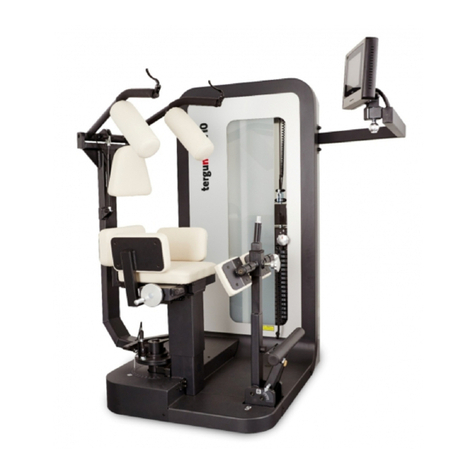
Proxomed
Proxomed tergumed 710 User manual
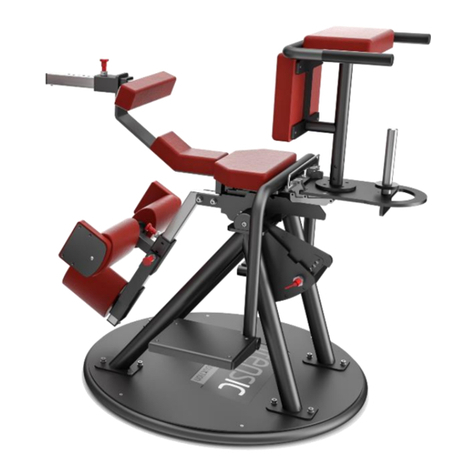
Proxomed
Proxomed Intensic Abductor User manual
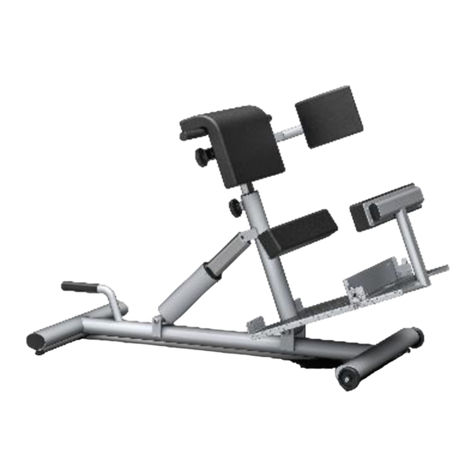
Proxomed
Proxomed compass MTT User manual
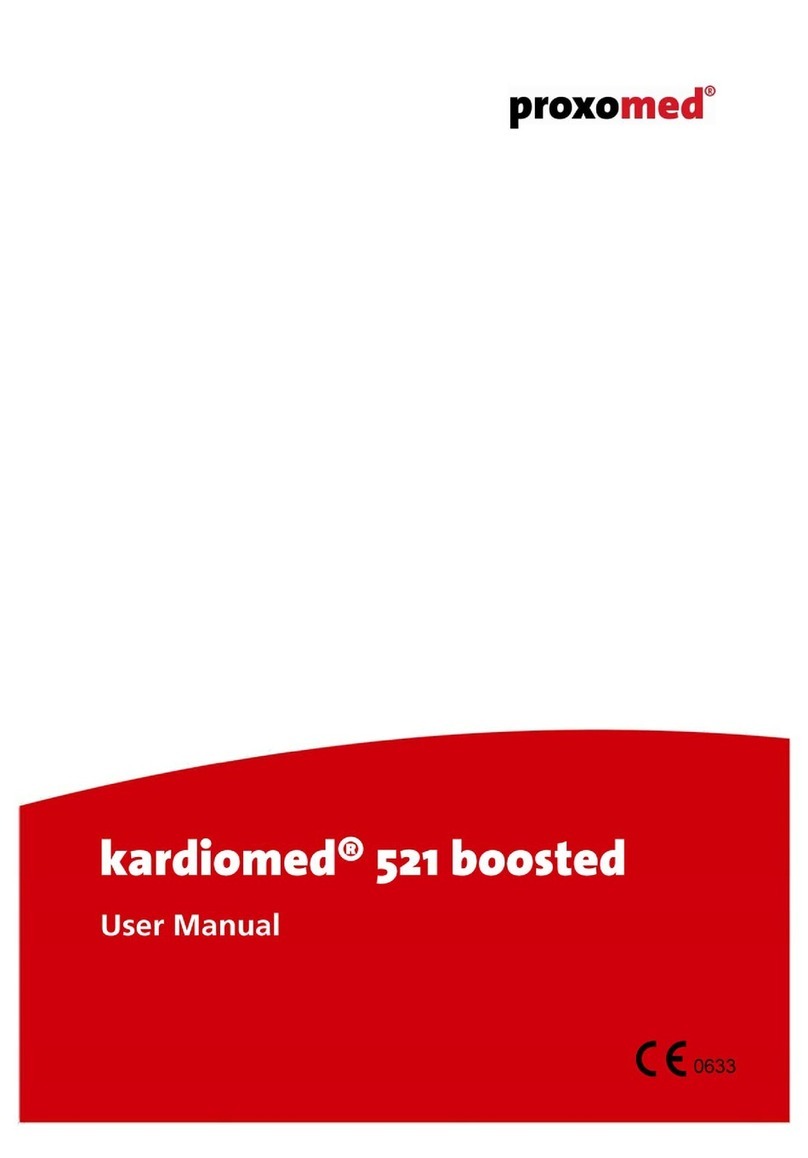
Proxomed
Proxomed kardiomed 521 User manual
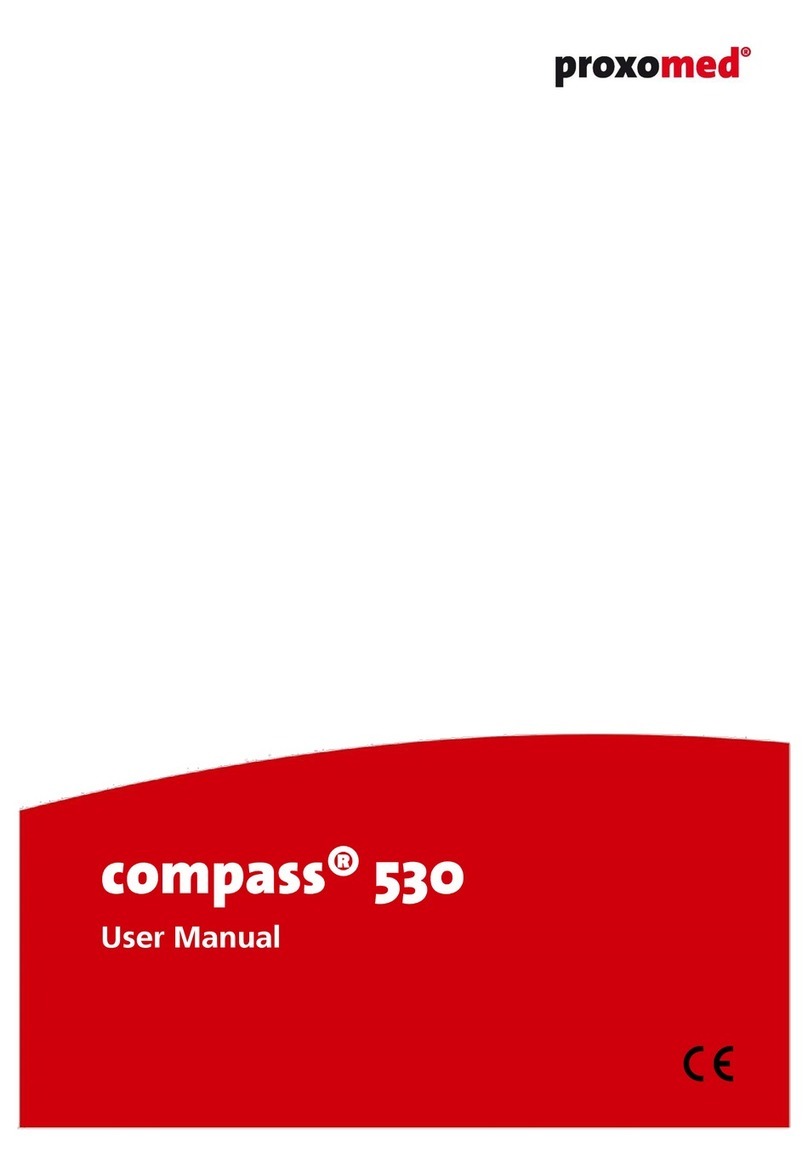
Proxomed
Proxomed Compass 530 User manual
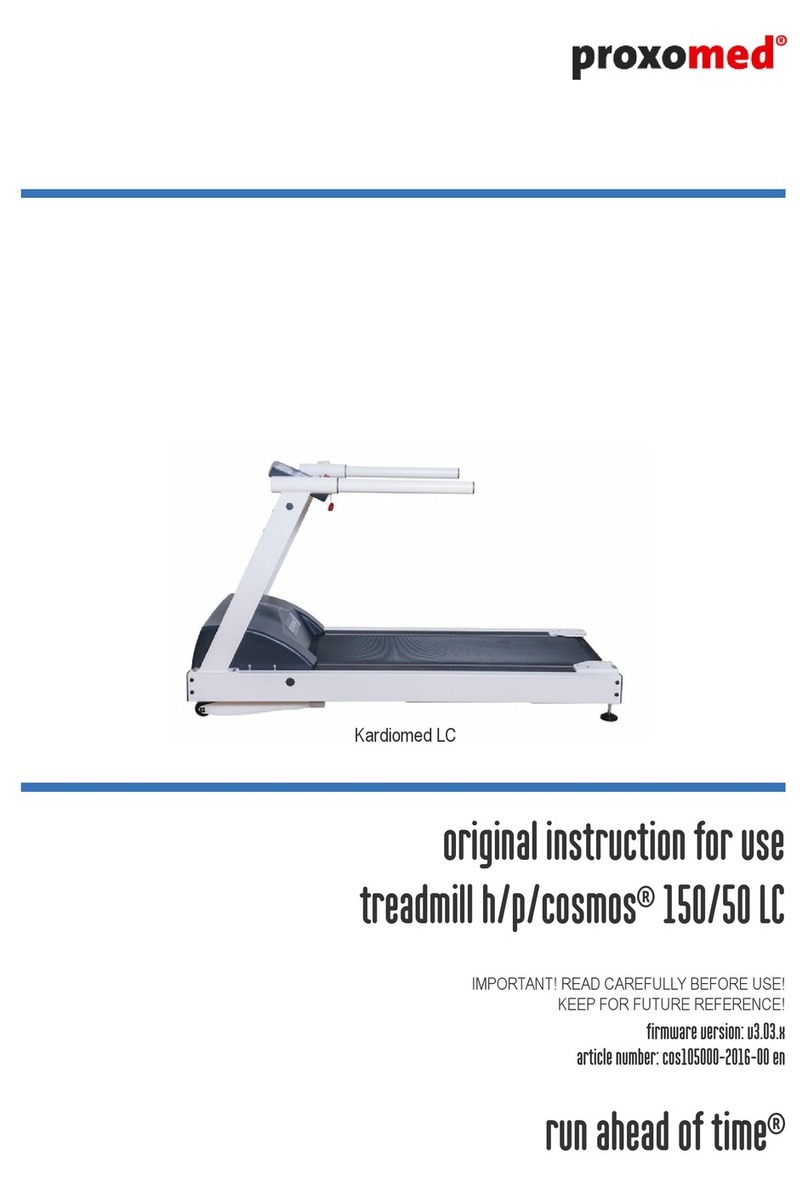
Proxomed
Proxomed Kardiomed LC Operation instructions

Proxomed
Proxomed kardiomed 521 User manual

Proxomed
Proxomed tergumed 710 User manual
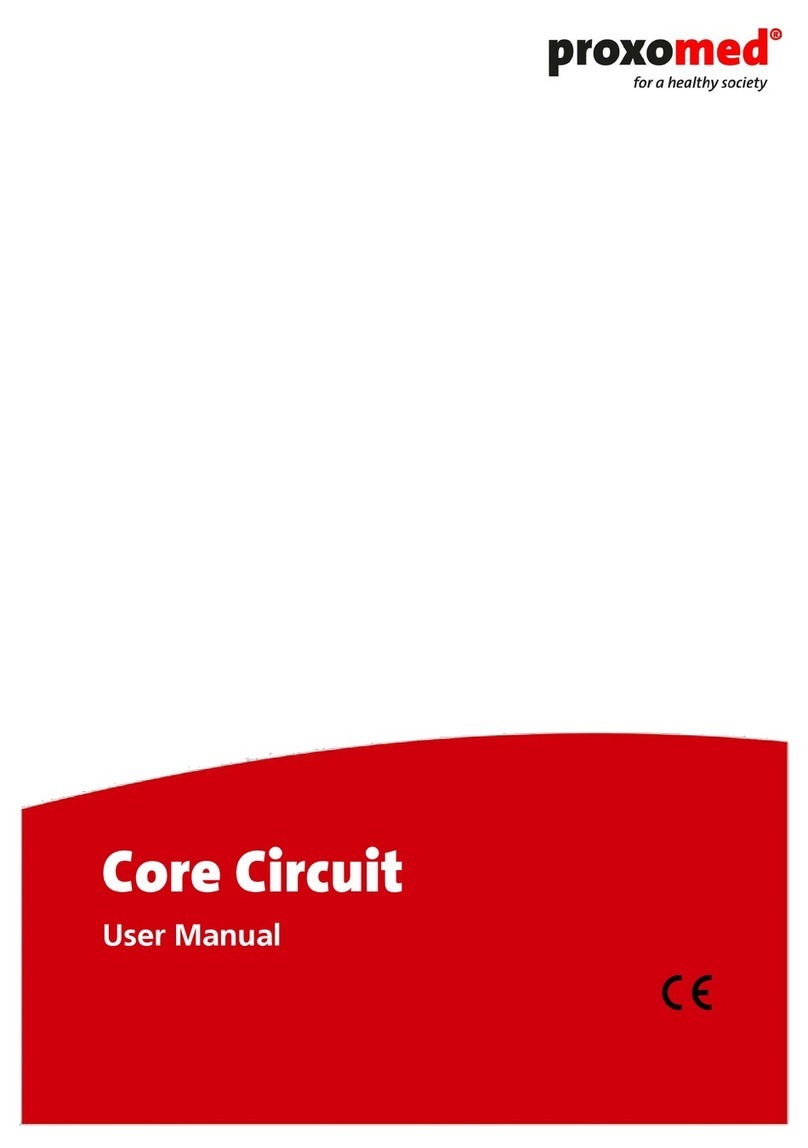
Proxomed
Proxomed Core Circuit User manual
